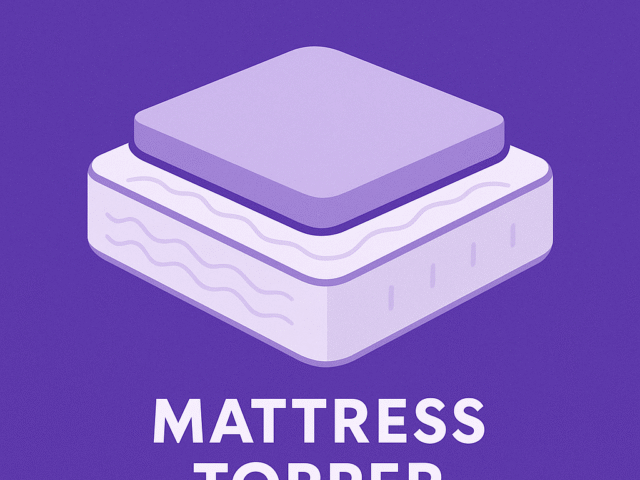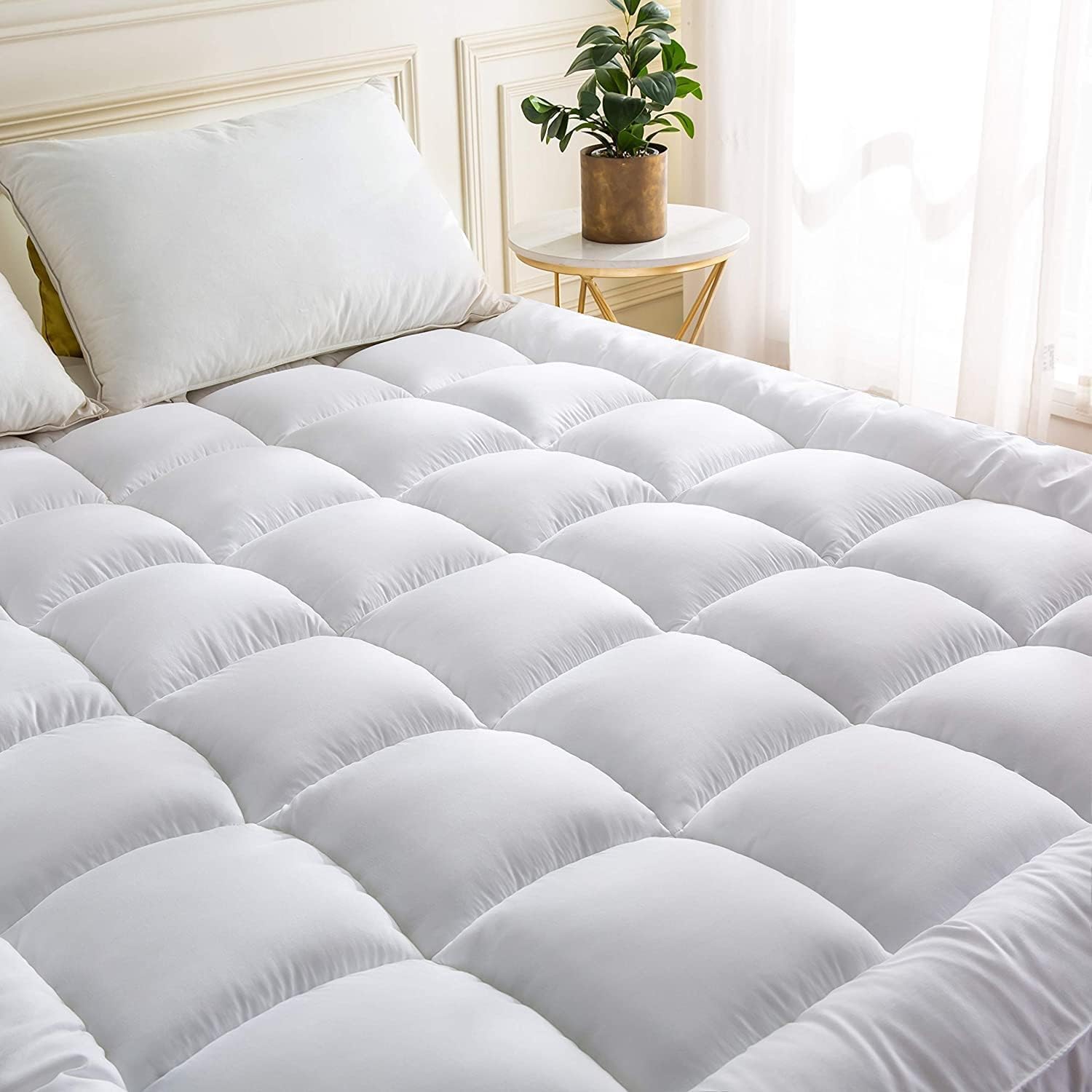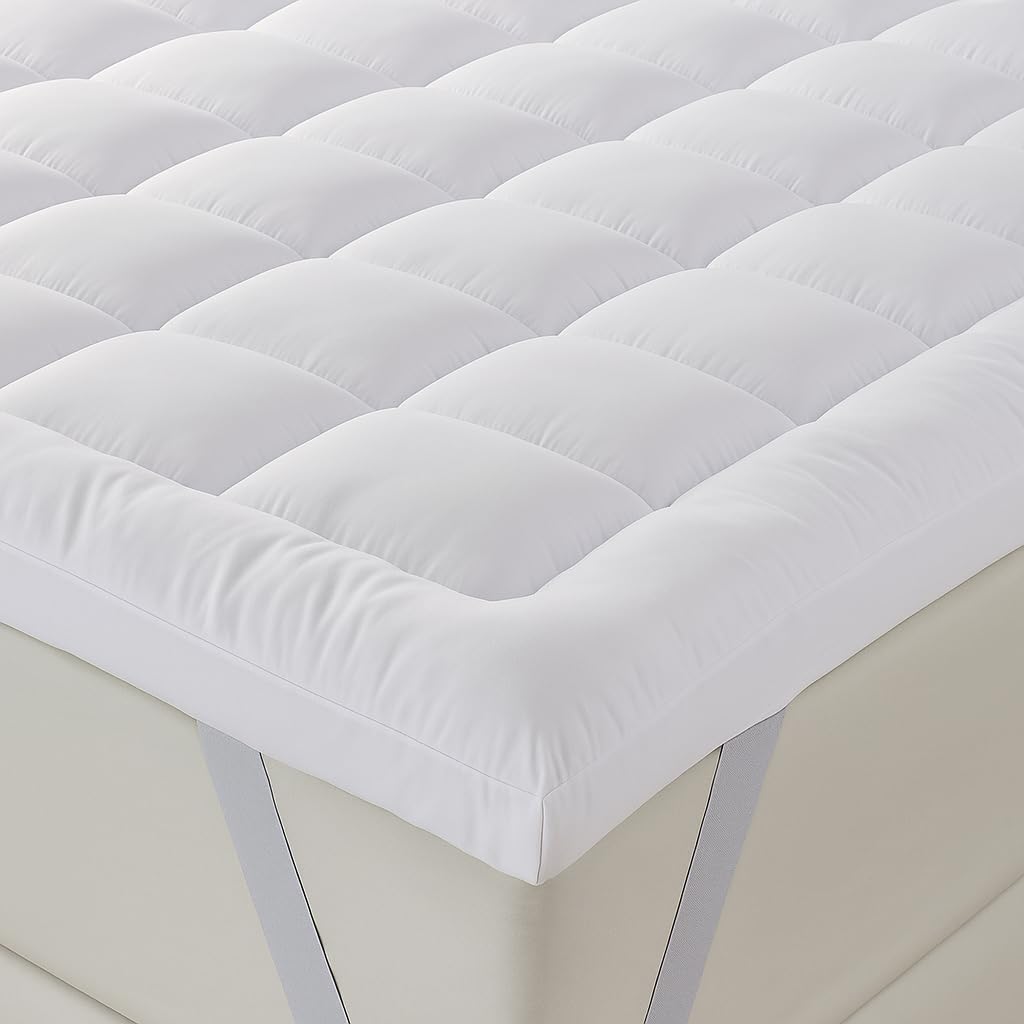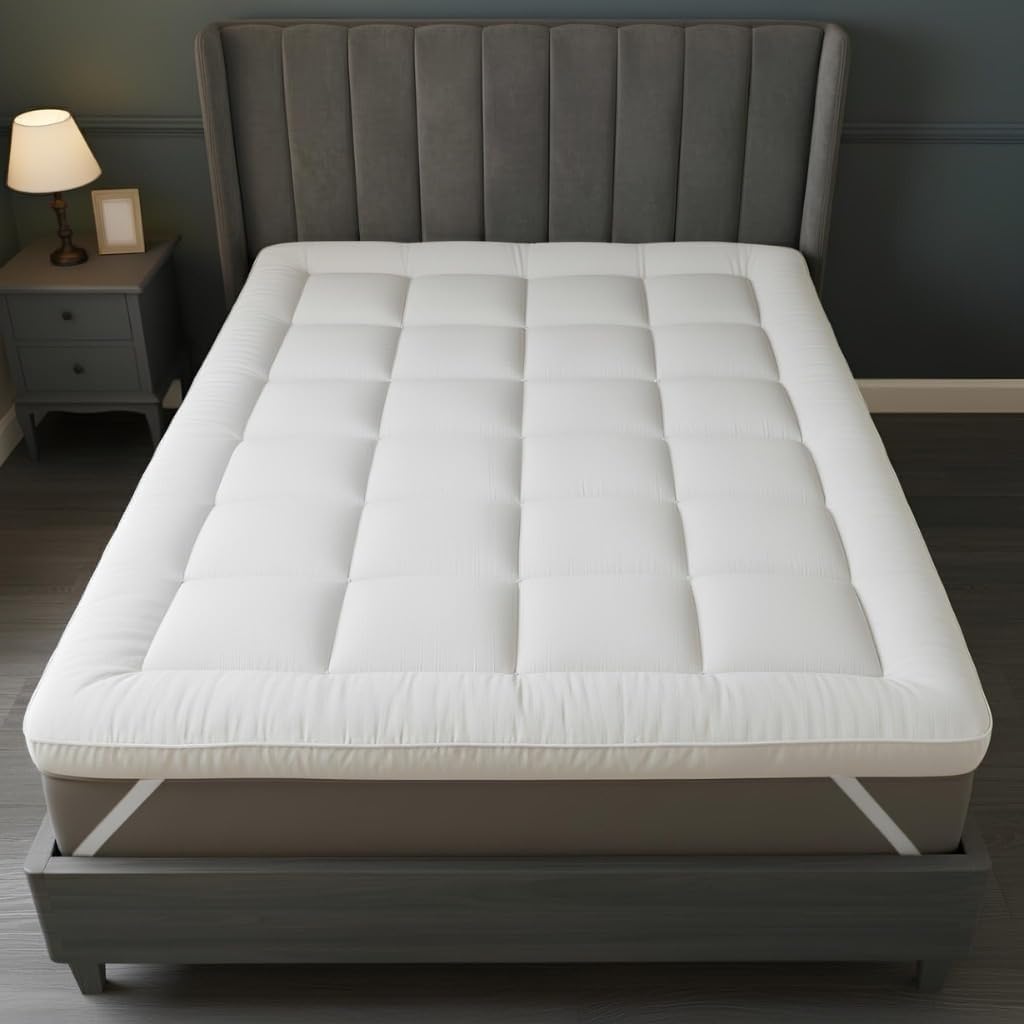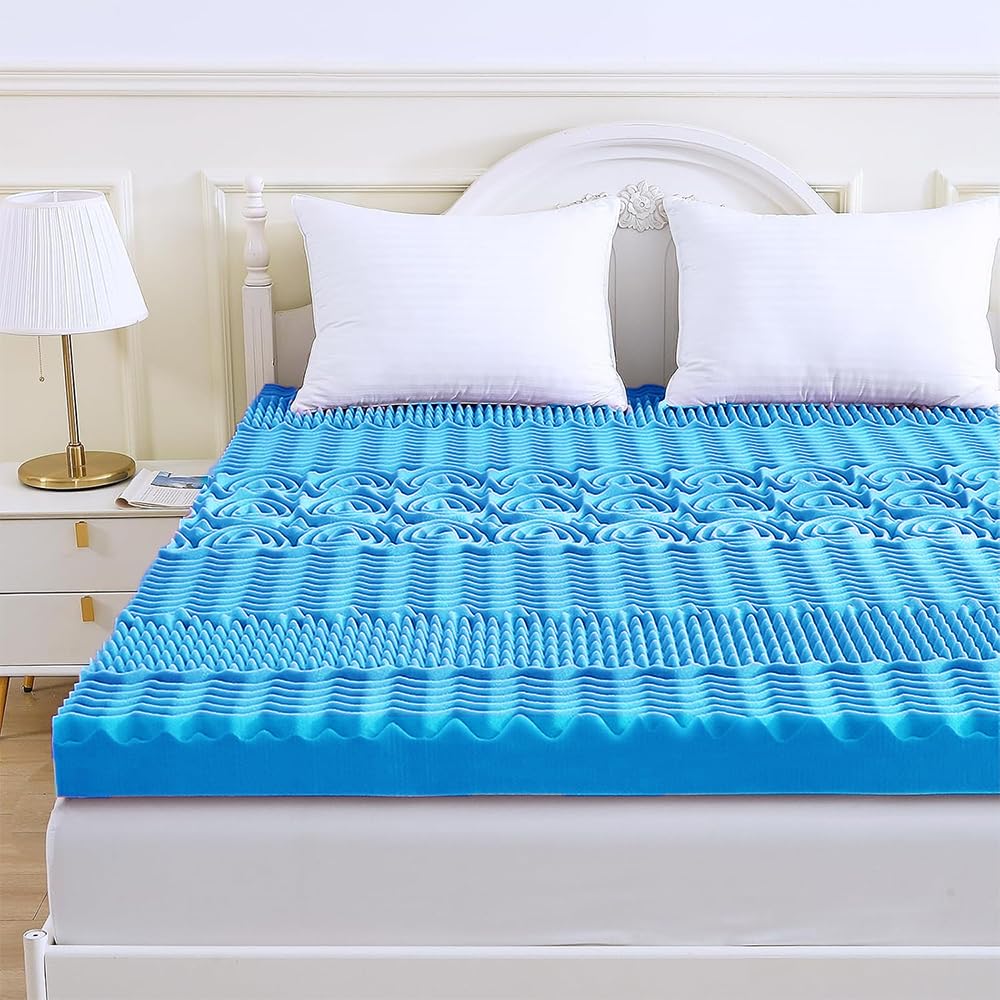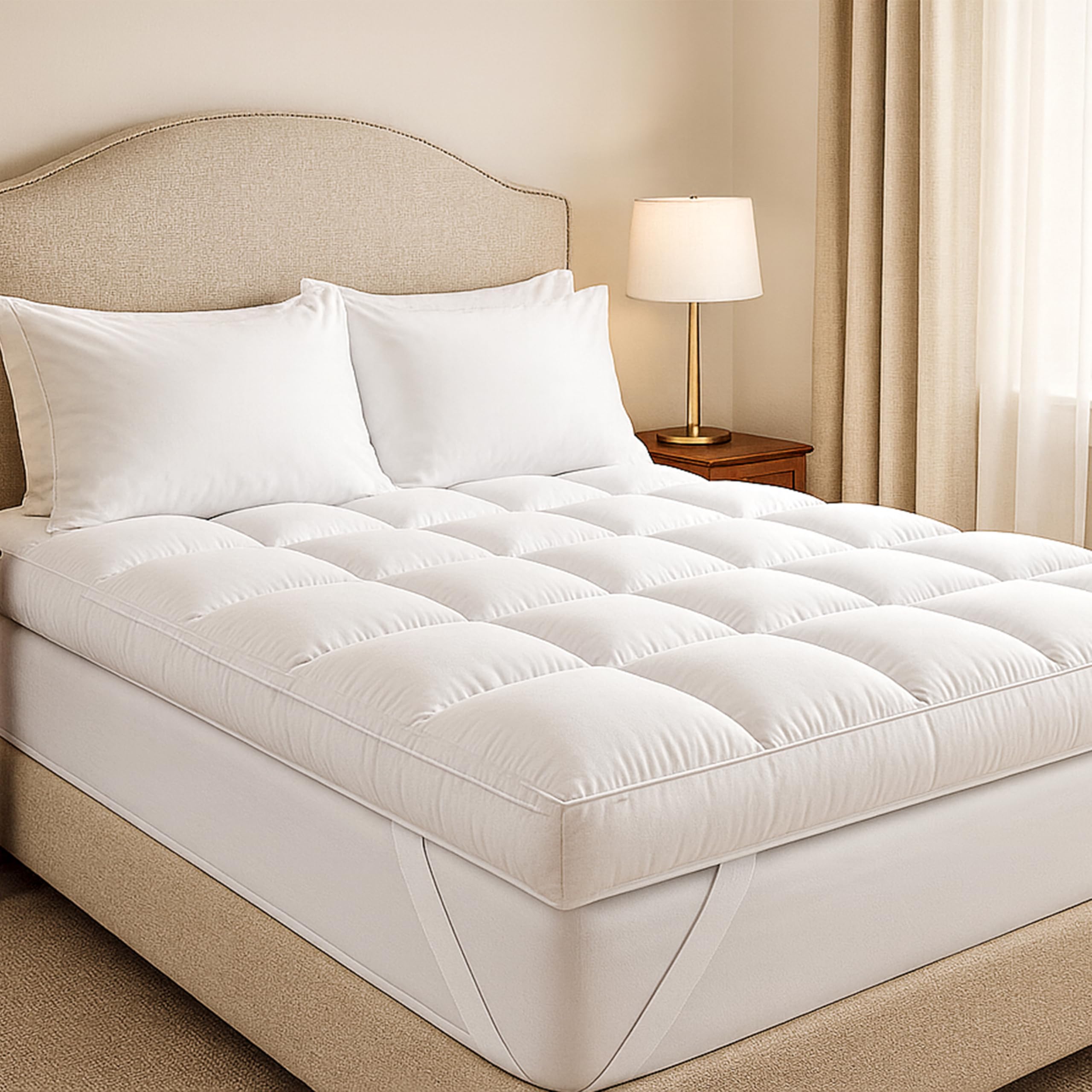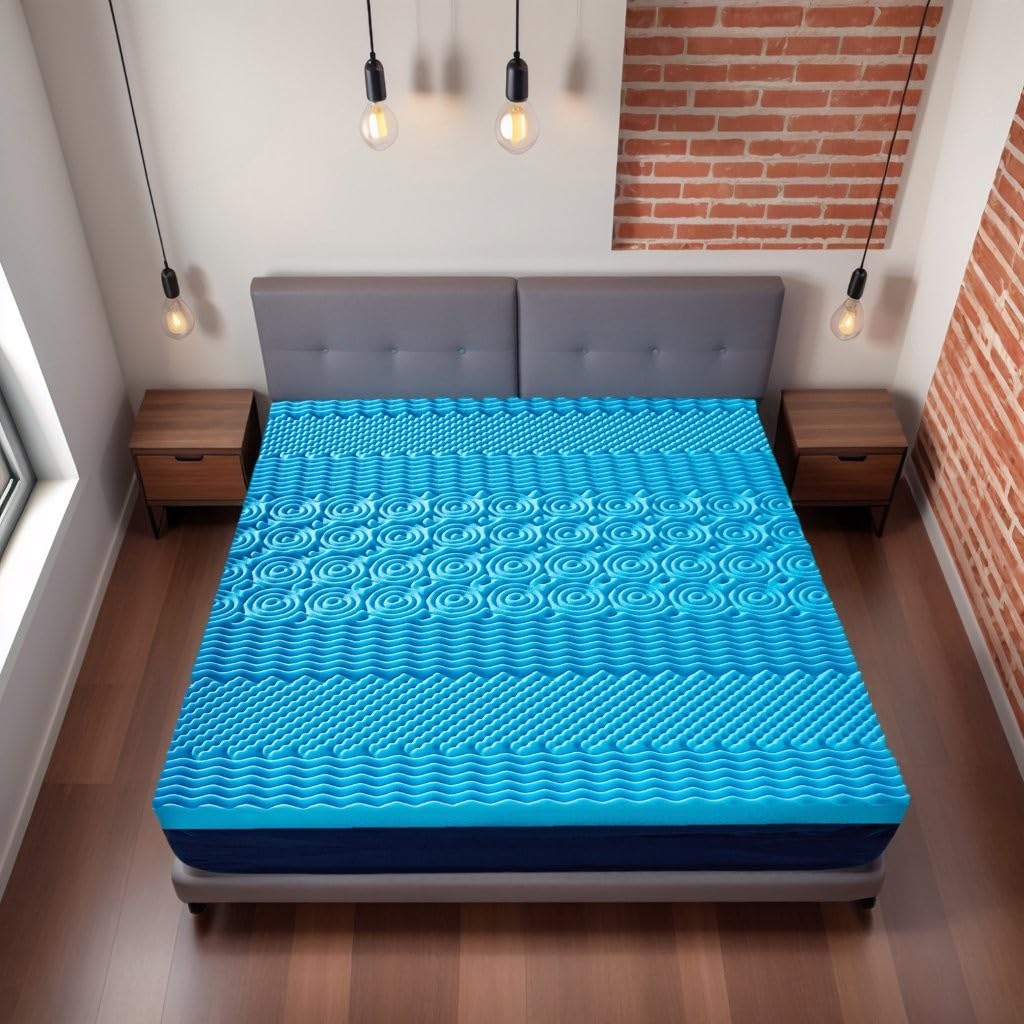Picking the right mattress topper thickness can transform how your bed feels without buying a new mattress. Thickness changes how much you sink, how much pressure relief you get at your shoulders and hips, and how warm the surface sleeps. In the UK, most toppers fall between 5 and 10 centimetres. This guide explains what each step in that range does, shows how to match depth to your sleep position and mattress firmness, and gives practical examples so you can buy with confidence.
Surface feel changes quickly with supportive, breathable toppers.
How Thickness Changes Feel
Thickness controls how much room the topper has to contour to your body before the firm support of the mattress takes over. A 5 to 7 centimetre topper adds a noticeable cushion that softens a firm bed without making you feel stuck. It works well for many back sleepers and lighter side sleepers. A 7.5 to 10 centimetre topper allows deeper contouring and more pressure relief, which side sleepers with sharp shoulders and hips often prefer. It can also help heavier sleepers who need extra material to compress before hitting the firmer layers below. The trade off is that thicker foam traps more heat and can make changing position slightly slower unless you choose a breathable material.
Match Thickness to Your Sleep Position
Side sleepers usually benefit from more cushion so the shoulders and hips can sink enough to keep the spine straight from neck to tailbone. A 7.5 to 10 centimetre topper in memory foam or a plush fibre blend does that job well, especially on a firm mattress. Back sleepers need a balance between relief and support so the hips do not drop. A 5 to 7 centimetre topper of medium feel often works. Stomach sleepers should go thin and firm to avoid arching the lower back. If you cannot give up softness, add just a modest 5 centimetre layer and consider switching to side or back if you experience discomfort.
Consider Your Mattress Firmness and Materials
A very firm mattress needs more topper depth to make a difference. If you currently wake with shoulder ache on a solid sprung or extra firm foam bed, a 7.5 to 10 centimetre topper will change the surface feel more reliably than a thinner one. If your mattress is medium firm and just a touch too rigid, 5 to 7 centimetres should be enough. If you already have a soft mattress, adding a thick plush topper may overdo the sink and lead to poor alignment, so choose a thinner option or a more supportive material such as latex.
Which Material Works at Each Thickness
Memory foam hugs and relieves pressure better than any other material at a given thickness. At 7.5 to 10 centimetres it can feel very plush, so choose open cell or gel infused foams for better airflow. Latex lifts rather than hugs and keeps you more on top of the bed, which helps with movement and sleeps cooler. At 5 to 7 centimetres, a medium latex topper can take the edge off a firm mattress without making it feel too soft. Microfibre and down alternative toppers add a light, cloud like cushion and are easy to wash, though they compress more and provide less support. Wool pads regulate temperature well and work best as comfort refiners rather than deep softeners.
Cooling and Cover Choices
If you run warm, pick breathable designs. Look for perforated memory foam, open cell structures and covers in cotton, bamboo or lyocell. Latex is a good choice for hot sleepers because it allows more airflow than dense foam and springs back quickly when you move. A breathable, quilted cover can add a touch of softness and protect the core material. Avoid plastic like protectors directly on top of foam, as they can trap heat. If you need waterproofing, place a breathable protector on the mattress itself, then the topper, then your fitted sheet.
Fit, Fixings and Depth
Measure the height of your mattress before buying a topper so you know what sheet depth you need afterwards. A 25 centimetre mattress plus a 7.5 centimetre topper may now require a 35 to 40 centimetre fitted sheet to prevent pop offs. Corner straps and deep elastic skirts help keep toppers in place. Some toppers add an anti slip base that grips smooth mattress fabric. Rotate the topper monthly to distribute wear and help it settle evenly.
When Thickness is Not the Only Problem
A topper can hide shallow impressions and improve comfort, but it cannot fix deep sags or broken springs. If your mattress bends you into a bowl shape, even a thick topper will follow that curve. In that case, use a topper as a short term comfort fix while you plan a replacement. Good posture comes first. If your bed is fundamentally supportive but just too firm, that is when a topper works best.
Practical Setups for Common Scenarios
On a firm hybrid mattress, a 7.5 centimetre open cell memory foam topper can relieve shoulder pressure for a side sleeper without making the bed feel swampy. Pair it with cotton percale sheets and a 7 to 10.5 tog duvet for most of the year. On a medium firm memory foam mattress that only needs a little softening, a 5 centimetre latex topper gives a touch of cushion while keeping you lifted for easy turning. On a guest bed that feels flat and hard, a plush fibre topper is an affordable way to create a welcoming surface, though it will need regular fluffing to keep its loft.
Care and Longevity
Allow foam toppers to expand for 24 to 72 hours after unboxing and let any initial odour dissipate. Use a breathable cover and wash it regularly according to the label. Spot clean foam rather than soaking it. Fibre and wool toppers are often machine washable, which is handy for family life. Whatever you choose, keep the topper dry and let it air occasionally. With basic care, a topper can maintain comfort for several years and defer the cost of a new mattress while you decide what you really need.
Thickness and materials that balance comfort and airflow are grouped in mattress toppers for UK sleepers; many pair setups with supportive pillows.
FAQs
Is 5 centimetres enough to make a difference? Yes for small adjustments on a medium firm bed, especially for back sleepers. Side sleepers on firm beds usually want more depth.
Will a 10 centimetre topper be too hot? It can be if the foam is dense and the cover is not breathable. Choose ventilated foam or latex and pair with cool sheets.
Can a topper fix a sagging mattress? It improves surface comfort but does not correct structural sagging. Plan to replace a failing mattress and use the topper as a bridge to that purchase.
